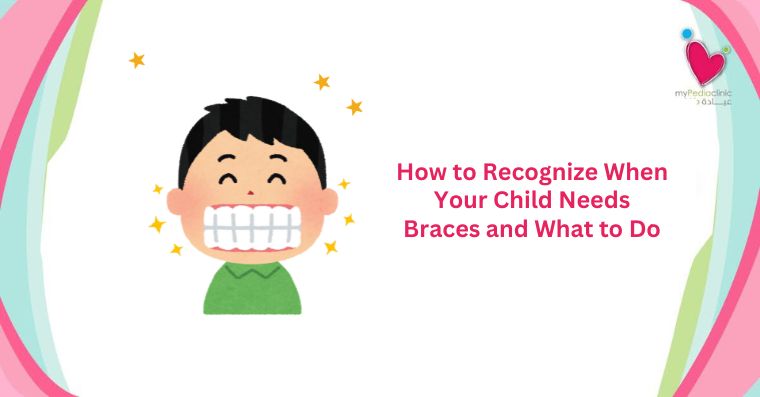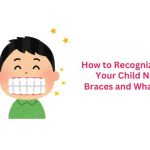Parents often worry when they see their child’s teeth coming in crooked. Sometimes teeth grow in a way that they get crowded together. This happens to lots of kids, and it’s pretty normal. But crooked teeth can cause real problems. Kids might have trouble eating certain foods. They could develop speech issues, too. Most importantly, it gets harder to brush and floss properly, which leads to cavities and gum problems. Getting braces for kids early on helps prevent these issues from getting worse.
Signs That Show Your Child Might Need Braces
Watching your child’s teeth develop takes patience. Some signs are obvious right away. Others take time to notice.
- Crowded teeth happen when there’s not enough room in the mouth. Think of it like trying to fit ten people in a car made for five. The teeth start pushing against each other and grow in weird directions.
- Big gaps between teeth can also mean trouble. While small gaps are normal when kids lose baby teeth, large spaces might indicate missing teeth or other jaw problems.
- Sometimes you’ll notice your child’s bite looks off. Their top teeth might stick out too far, or their bottom teeth might push forward past the top ones.
Physical Signs Parents Should Watch For:
- Teeth that look twisted or tilted: These teeth often overlap with neighbors and create spots that are impossible to clean properly, leading to decay and gum irritation over time
- Bite problems that affect daily life: When upper and lower teeth don’t meet correctly, it can make chewing difficult and cause jaw pain or headaches
- Jaw issues and clicking sounds: If your child’s jaw makes noise when they eat or seems to shift sideways, this could signal alignment problems that need attention
- Trouble closing their mouth naturally: When front teeth stick out too much, kids can’t close their lips without effort, which affects their appearance and self-confidence
The Best Time for Orthodontic Check-ups
When to Schedule That First Visit
Most dentists suggest bringing kids in for orthodontic evaluation around age seven or eight. This may seem early, but it’s smart timing. At this age, orthodontists can spot problems before they get complicated.
Don’t panic if your child needs evaluation early. It doesn’t always mean immediate treatment. Many kids just need monitoring as their adult teeth come in. Treatment often starts later, usually between the ages of ten and twelve.
What Affects Treatment Timing
- Every child develops differently. Some need help right away. Others can wait a few years.
- The mix of baby teeth and adult teeth matters a lot. Orthodontists use this natural transition period to guide teeth into better positions. It’s like directing traffic during a busy intersection change.
At myPediaclinic, our team looks at each child individually. We don’t rush into treatment unless it’s really needed. Getting braces for kids works best when the timing matches their specific development pattern.
Important Timing Factors:
- Severe crowding that affects new teeth – When there’s clearly not enough space, early treatment can prevent adult teeth from coming in completely sideways or getting stuck
- Functional problems with eating or talking – If bite issues make it hard for your child to eat healthy foods or speak clearly, treatment shouldn’t wait
- Growth-related jaw problems – Upper and lower jaws that don’t match in size work better when treated during active growing years
- Bad habits that damage teeth – Thumb sucking past age five or tongue thrusting can permanently change tooth positions and require intervention
Getting Your Child Evaluated: Simple Steps
When you spot potential problems, act reasonably quickly. Call an orthodontist’s office and schedule a consultation. Most offices are friendly and understand parents’ concerns.
- The first appointment involves a complete check-up. Expect X-rays, photos, and maybe some molds of your child’s teeth. This sounds scarier than it actually is. Most kids handle it just fine.
- Ask lots of questions during your visit. Find out about different treatment options. Ask how long treatment might take. Discuss costs upfront so there are no surprises later.
- Getting a second opinion makes sense for major treatment decisions. Different orthodontists sometimes suggest different approaches. Finding someone you trust and feel comfortable with matters.
- Remember that orthodontic treatment helps your child long-term. Straight teeth are easier to keep clean. This means fewer cavities and healthier gums as they grow up. Plus, most kids feel more confident with a nice smile.
Schedule Your Child’s Orthodontic Consultation Today
Taking action when you notice orthodontic problems gives your child the best chance for a healthy smile. Catching issues early usually means simpler treatment and better results down the road.
At myPediaclinic, our orthodontic specialists take time with each family. We explain everything clearly and create treatment plans that work for your schedule and budget. Don’t put off that evaluation – your child’s smile and oral health will benefit from early professional attention.





